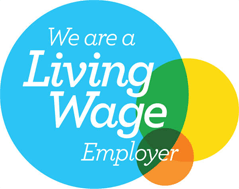Employee Discrimination & Harassment Advice

Protecting employees from discrimination at work
Workplace discrimination legislation (the Equality Act 2010) protects people with ‘protected characteristics’ from unfair treatment. Protected characteristics include sex, marital status, gender reassignment, pregnancy, maternity, race, disability, sexual orientation, religion or belief, and age.
Types of workplace discrimination
There are four main types of discrimination at work and a further two forms of disability discrimination.
Direct discrimination
Direct discrimination occurs where you are treated less favourably because of a protected characteristic. This means that you have to show that you have been treated less favourably than a real or hypothetical comparator whose circumstances (apart from the protected characteristic) are not materially different to yours. The exception to this is pregnancy and maternity discrimination where formal comparators are not required.
Also covered is less favourable treatment that occurs because of your association with a person who has a protected characteristic. An example of this could be when someone suffers because their partner is disabled. Additionally, you can bring a claim when you are treated less favourably because you are perceived to have a protected characteristic. This might occur where the treatment is because someone is thought to be gay.
Indirect discrimination
Indirect discrimination is concerned with acts, decisions or policies (broadly speaking) which are not intended to treat anyone less favourably, but which in practice have the effect of disadvantaging a group of people with a particular protected characteristic. Where such an action disadvantages an individual with that characteristic, it will amount to indirect discrimination unless it can be objectively justified.
Objective justification is defined as a showing that the measure is a proportionate means of achieving a legitimate aim. A legitimate aim is the reason behind the discrimination. This reason must not be discriminatory in itself and it must be a genuine or real reason. Proportionate means the aim or the reason behind the discrimination must be fairly balanced against the disadvantage suffered. It must be appropriate and necessary. If there are better and less discriminatory ways of doing things, it will be more difficult to justify discrimination.
Harassment
Harassment is unwanted conduct related to a protected characteristic that has the purpose or effect of either:
- Violating your dignity; or
- Creating an intimidating, hostile, degrading, humiliating or offensive environment for you
In addition, harassment also occurs when the unwanted conduct is specifically of a sexual nature or there is less favourable treatment because you have rejected or submitted to unwanted conduct of a sexual nature or related to gender reassignment or sex.
Victimisation
Victimisation provisions protect you where you do (or might do) protected acts such as bringing discrimination claims, complaining about harassment, or becoming involved in another employee’s discrimination complaint. Specifically, victimisation occurs when you are subjected to a detriment because either:
- You have done a protected act; or
- It is believed that you have done, or may do, a protected act
A protected act is one (or more) of
- Making a claim or complaint of discrimination under the Equality Act
- Giving evidence or information to help someone else who has made a complaint or a claim under the Act
- Doing anything else which is related to the Act
- Saying that someone has done something unlawful under the Act
Workplace discrimination legislation protects:
- Job applicants and employees
- Contract workers, including agency workers
- Police officers and applicants to join the police
- Partners and those seeking partnership in a firm (including an LLP)
- Barristers and trainee advocates
How we will help
Our discrimination law solicitors can help with all forms of discrimination at work, including if you are treated less favourably because you have a part-time or fixed-term contract. If negotiations fail to resolve the situation, we can also represent you at an Employment Tribunal.
Use the menu to find out more about the different forms of discrimination, or click below:
- Age
- Disability
- Pregnancy and Maternity
- Race
- Religion or Belief
- Sex
- Sexual Orientation
- Gender Reassignment
- Menopause Discrimination
- Sexual Harassment
- Bullying & Harassment
To speak to a specialist Employment Law solicitor, contact us today on 01273 609911, or email info@ms-solicitors.co.uk.


